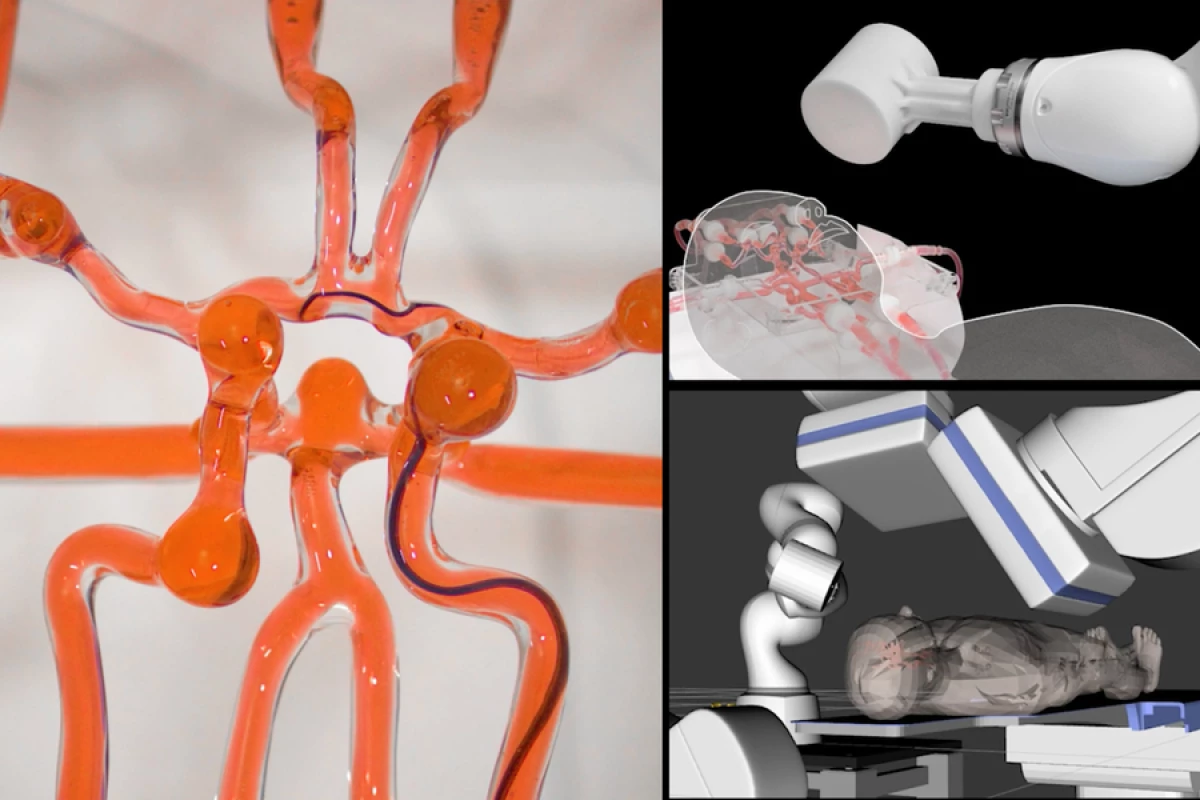When someone has experienced a stroke or aneurysm, they may require a surgical procedure known as an endovascular intervention. A new MIT-designed robotic system could ensure that they receive the treatment quickly, even if the physician is nowhere nearby.
In a regular endovascular intervention, a specially trainer neurovascular surgeon steers a thin wire through one of the patient's cerebral blood vessels, up to the clot. Visually guided by intermittent X-ray imaging, they then either physically break the clot part, or deliver drugs to dissolve it.
It's crucial that the procedure be performed as quickly as possible, before oxygen deprivation to the brain causes irreversible damage. Unfortunately, if the patient is located too far away from a hospital at which a neurosurgeon is based, it may be impossible to transport them to that hospital in time.
That's where the experimental new system is designed to come in.
It incorporates an articulated robotic arm with an actuating magnet on the end, which sits beside the patient's head as they lie on an operating table at their local hospital. There's also a motorized linear drive unit, which pushes or pulls on the same type of wire used in a conventional endovascular intervention (although the wire does have a magnetically responsive tip).
The surgeon – who is located at a larger, more central hospital – utilizes a mouse to advance and retract the wire within the blood vessel, plus they use a joystick to move the arm and rotate the magnet. Doing the latter allows them to remotely steer the wire from outside the patient's body, since the direction and strength of the magnet's pull on the wire varies as it rotates relative to the wire.
In tests performed on a transparent scale model of blood vessels in the brain, neurosurgeons learned to use the system to steer a wire to a target location after just an hour of training.
"We imagine, instead of transporting a patient from a rural area to a large city, they could go to a local hospital where nurses could set up this system," said the lead scientist, Prof. Xuanhe Zhao. "A neurosurgeon at a major medical center could watch live imaging of the patient and use the robot to operate in that golden hour. That’s our future dream."
The system is illustrated in the video below, and is described in a paper that was recently published in the journal Science Robotics.
Source: MIT




